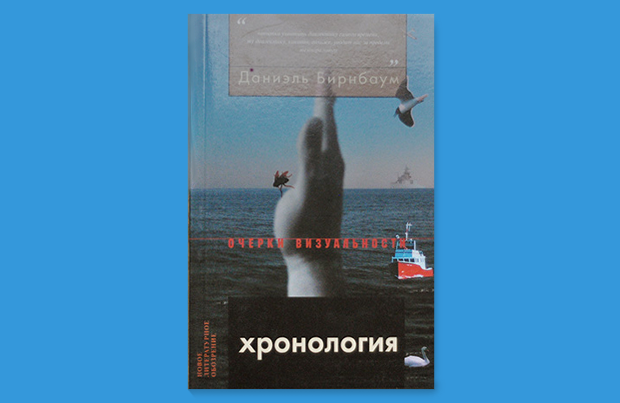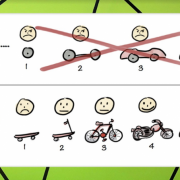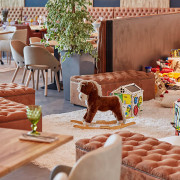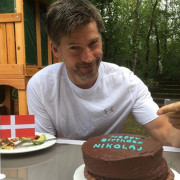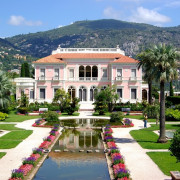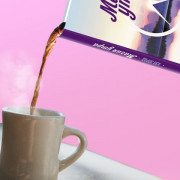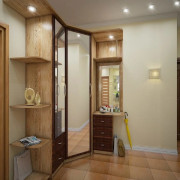Tate britain
Содержание:
- Уровни Tate Modern
- Art in this room
- 13 rooms in Materials and Objects
- Marisa Merz and Nairy Baghramian
- Marisa Merz and Nairy Baghramian
- Collage
- Collage
- Doris Salcedo
- Doris Salcedo
- Explore Materials and Objects
- Explore Materials and Objects
- A View From Tokyo: Between Man and Matter
- A View From Tokyo: Between Man and Matter
- Irving Penn
- Irving Penn
- Mrinalini Mukherjee
- Mrinalini Mukherjee
- Tacita Dean
- Tacita Dean
- Haegue Yang
- Haegue Yang
- Sol LeWitt
- Sol LeWitt
- Mark Dion
- Mark Dion
- ROOM 3: POP
- Ana Lupas, The Solemn Process 1964–2008 (1964–74/76; 1980–5; 1985–2008)
- Edward Ruscha, 7101 Sepulveda Blvd., Van Nuys 1967, printed 1999
- ROOM 4: The Factory
- Tips for Visiting
- Edward Ruscha, DIRTY BABY 1977
- Из истории
- ROOM 11: MORTAL COIL
- Знаменитые музеи Лондона
- Art in this room
- Архитектура
- О месте Галерея Тейт Модерн
- 12 rooms in Artist and Society
- Mitch Epstein and Marwan Rechmaoui
- Mitch Epstein and Marwan Rechmaoui
- A view from São Paulo: Abstraction and Society
- A view from São Paulo: Abstraction and Society
- Civil War
- Civil War
- David Goldblatt
- David Goldblatt
- Soviet Photobooks
- Soviet Photobooks
- Graciela Iturbide
- Graciela Iturbide
- Joseph Beuys
- Joseph Beuys
- Bani Abidi
- Bani Abidi
- Citizens
- Citizens
- Portraits and Community
- Portraits and Community
- Yinka Shonibare CBE
- Yinka Shonibare CBE
- Igor Grubic
- Igor Grubic
- Dawn Mellor, Sergeant June Ackland (Trudie Goodwin) 2016
Уровни Tate Modern
Всего в Tate Modern 7 уровней.
0 уровень. Главный вход
- Сувенирный магазин, где можно прикупить памятный подарок в стиле «Modern» или книги по современному искусству.
-
Турбинный Холл, где проходят выставки.
1 уровень. Вход со стороны реки.
- Комната для семинаров, место продажи билетов на платные выставки.
- Сувенирный магазин «River shop».
- Кафе.Часы работы:
Воскресенье-четверг, с 10.00-17.30,
Пятница, с 10.00-20.30,
Суббота, с 9.00-18.30
2 уровень
- «Поэтика и Мечты» — в западном крыле. Здесь можно увидеть работы Дали, сюрреализм и даже русские революционные постеры и многое другое. Расположение экспозиций и их список можно посмотреть по карте.
- Восточное крыло периодически занимает та или иная платная выставка. Что именно находится в данный момент — надо смотреть на сайте.
3 уровень
- «Измененное видение» — в западном крыле. После Второй мировой войны в искусстве появилось новое течение, представленное в этих экспозициях.
- Восточное крыло отдано под платные выставки, меняющиеся от месяца к месяцу.
- Сувенирный магазин
- Экспресс-бар. Часы работы:
Воскресенье-четверг, 10.00 – 17.30
Пятница и суббота, 10.00 – 21.30
4 уровень
- «Четкость и структура» — в западном крыле. Абстрактное искусство 20 века
- «Энергия и процесс» — в восточном крыле. Радикальное итальянское художественное течение 1960-1970-х годов.
На 5 уровень простым посетителям вход воспрещен.
6 уровень
Ресторан. Здесь можно поужинать с отличным видом на Лондон.
Часы работы:
Воскресенье-четверг, 10.00 – 17.30
Пятница и суббота, 10.00 – 21.30
Вид из ресторана Tate Modern
Я не любитель современного искусства (разве что сюрреализм вызывает интерес), но посещение Tate Modern заложено в нашу программу.
Дело в том, что помимо экспонатов, этот музей является одной из лучших смотровых площадок Лондона, открывая просто потрясающий вид на Собор Святого Павла и мост Миллениум. Насладиться панорамой города можно в кафе и ресторане на верхнем этаже галереи.
Можно даже заранее забронировать столик в ресторане вот . В пятницу и субботу галерея работает до 22.00, а значит можно увидеть ночной Лондон с высоты.
Art in this room

Salvador Dalí
Lobster Telephone
1936
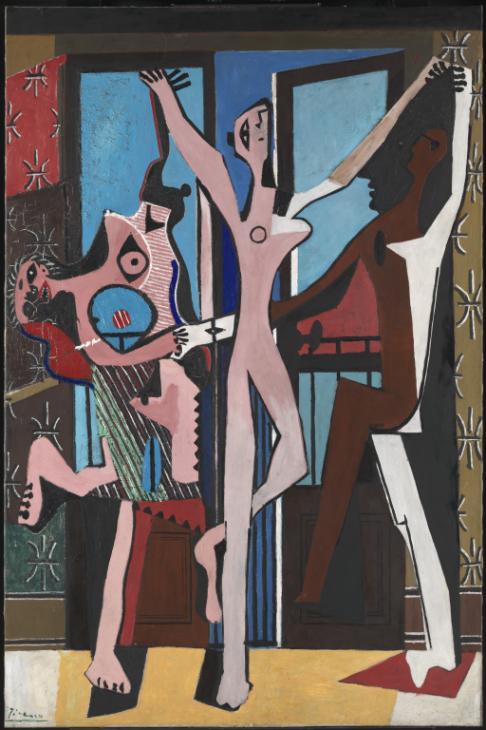
Pablo Picasso
The Three Dancers
1925

Salvador Dalí
Autumnal Cannibalism
1936
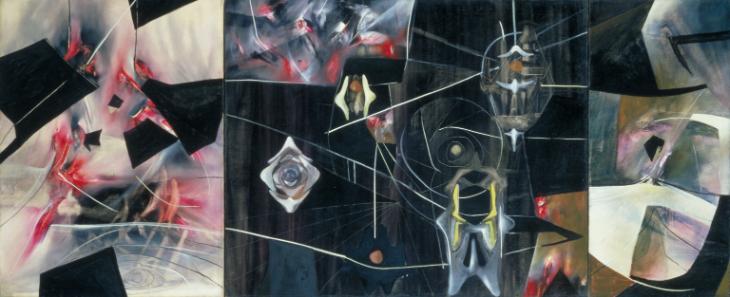
Matta (Roberto Matta Echaurren)
Black Virtue
1943
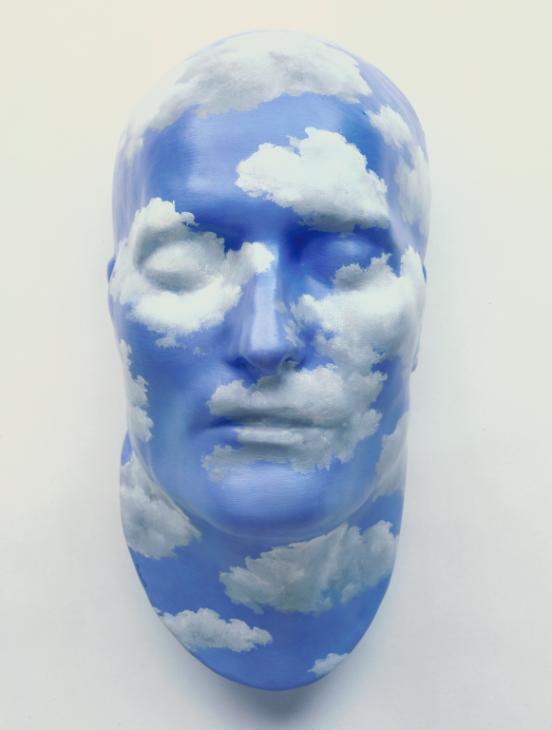
René Magritte
The Future of Statues
1937
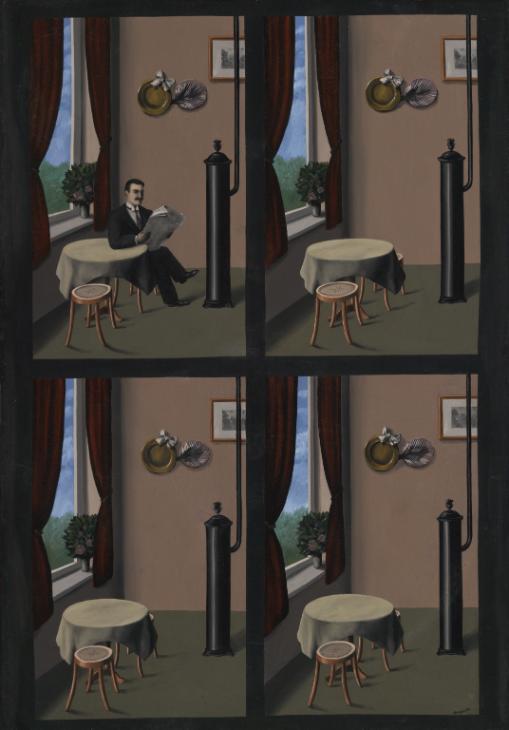
René Magritte
Man with a Newspaper
1928

Paul Klee
Ships in the Dark
1927
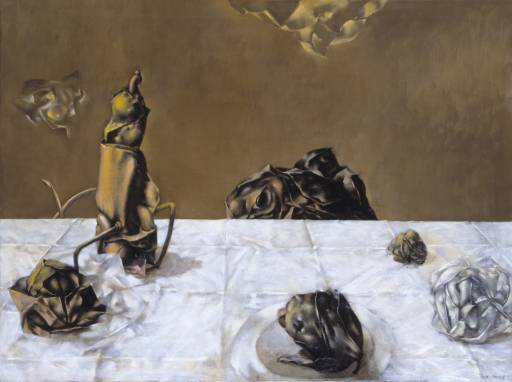
Dorothea Tanning
Some Roses and Their Phantoms
1952

Joan Miró
Head of a Catalan Peasant
1925
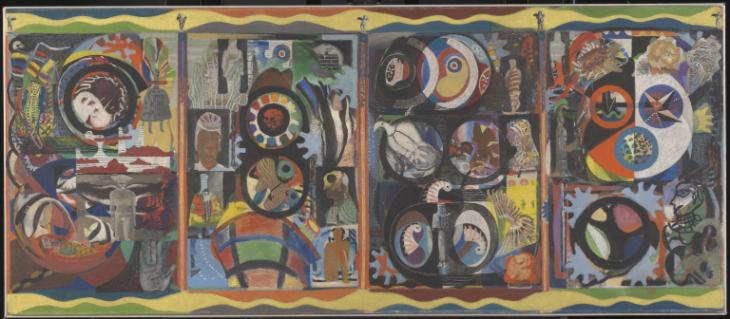
Eileen Agar
The Autobiography of an Embryo
1933–4
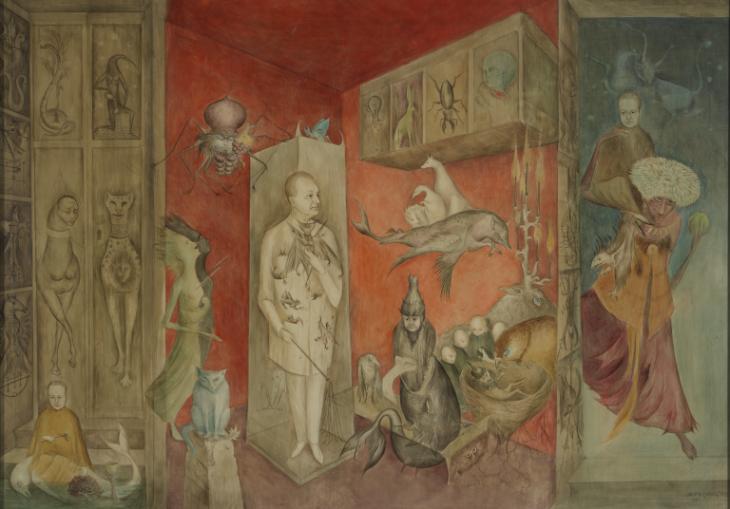
Leonora Carrington
Transference
1963
Sorry, no image available
Louise Bourgeois
Fillette (Sweeter Version)
1968–99, cast 2001
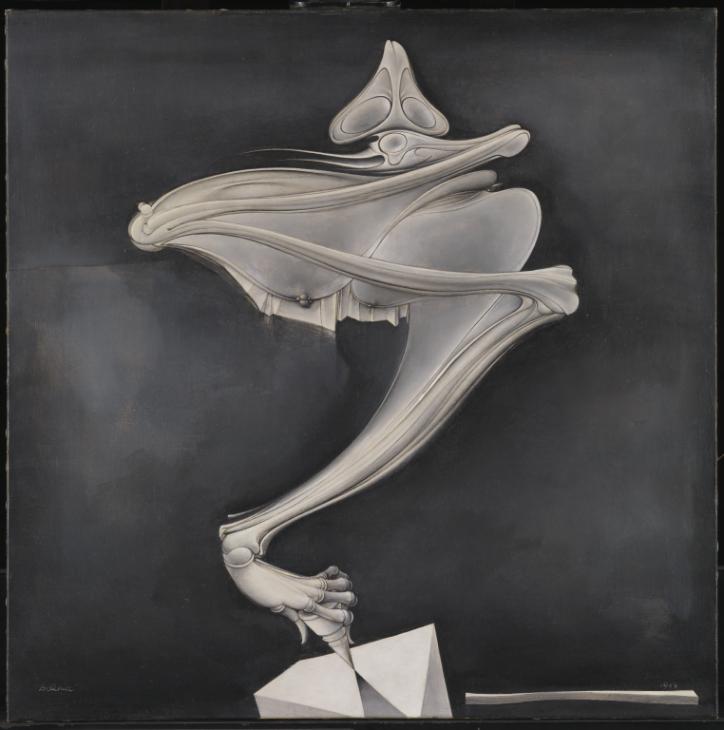
Hans Bellmer
Peg-Top
c.1937–52

Leonor Fini
Little Hermit Sphinx
1948
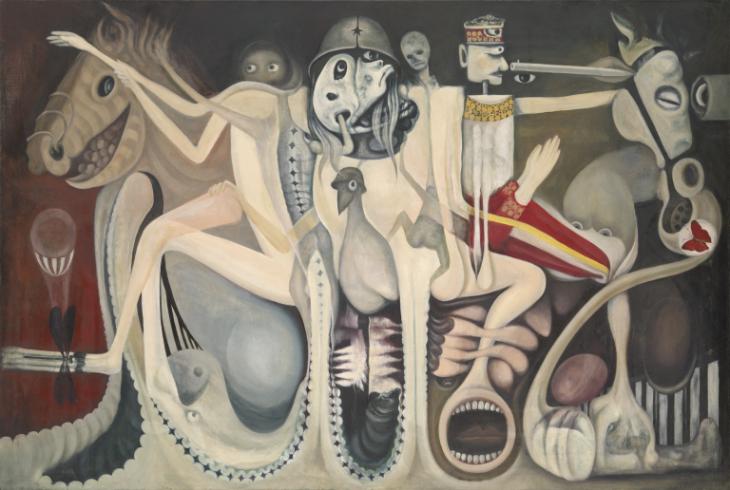
Kikuji Yamashita
Deification of a Soldier
1967
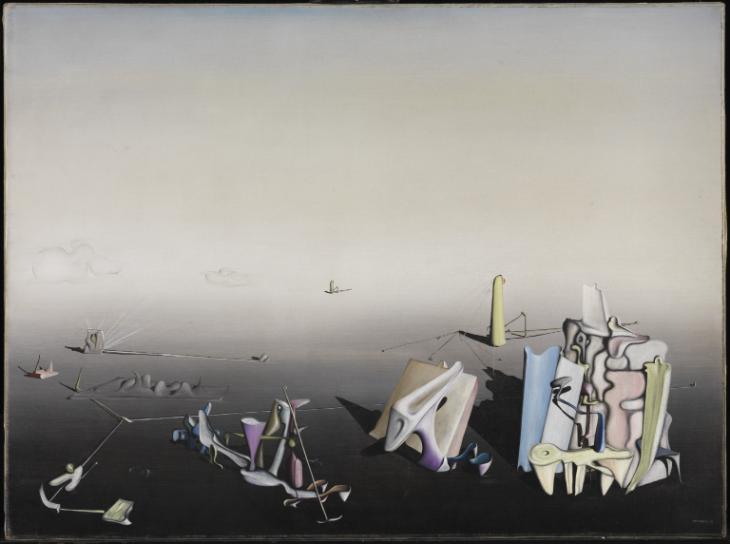
Yves Tanguy
Azure Day
1937

Wifredo Lam
Ibaye
1950
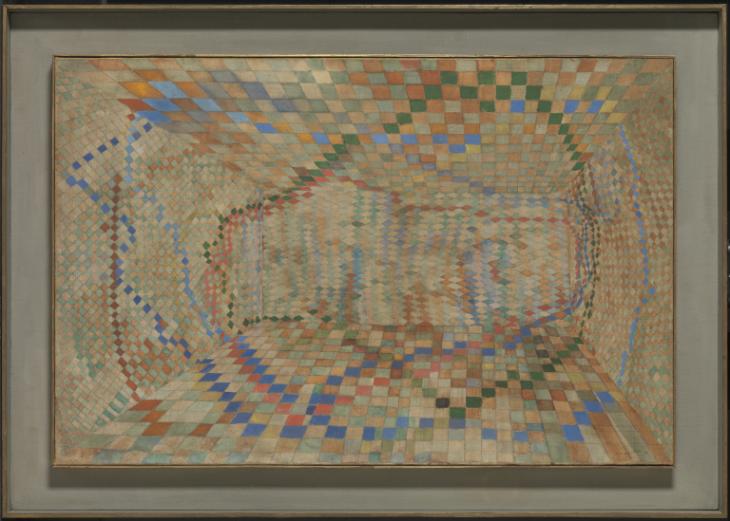
Maria Helena Vieira da Silva
The Tiled Room
1935
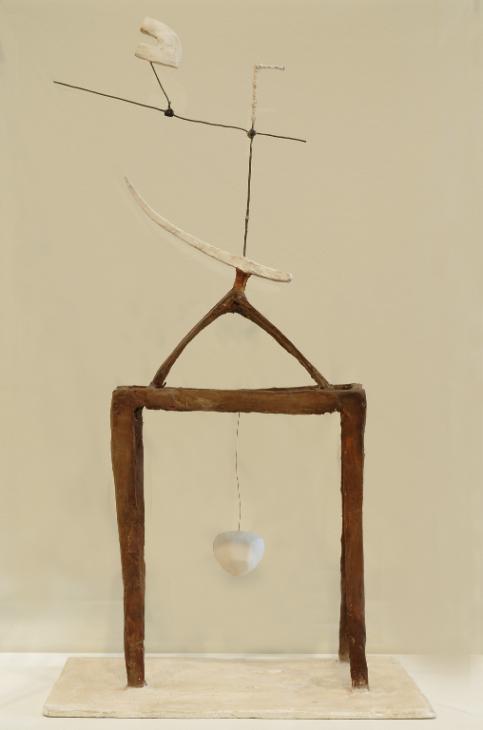
Alberto Giacometti
Hour of the Traces
1932

Yves Tanguy
A Thousand Times
1933

Henry Moore OM, CH
Composition
1932
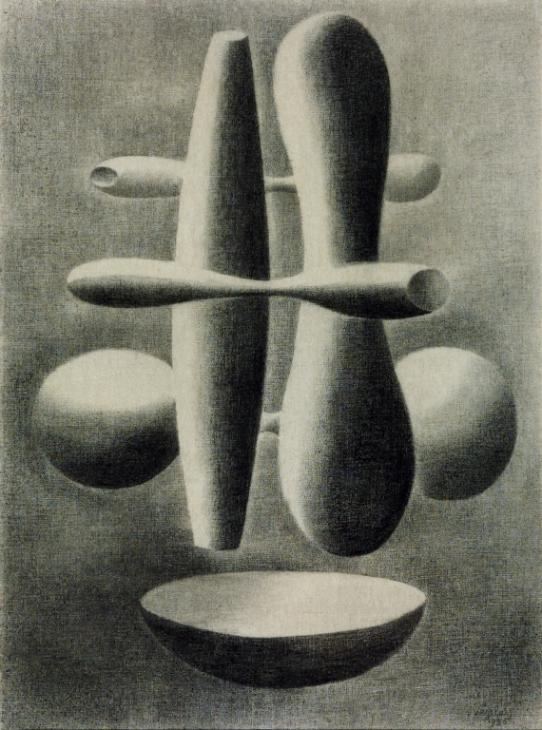
Paule Vézelay
Forms
1936
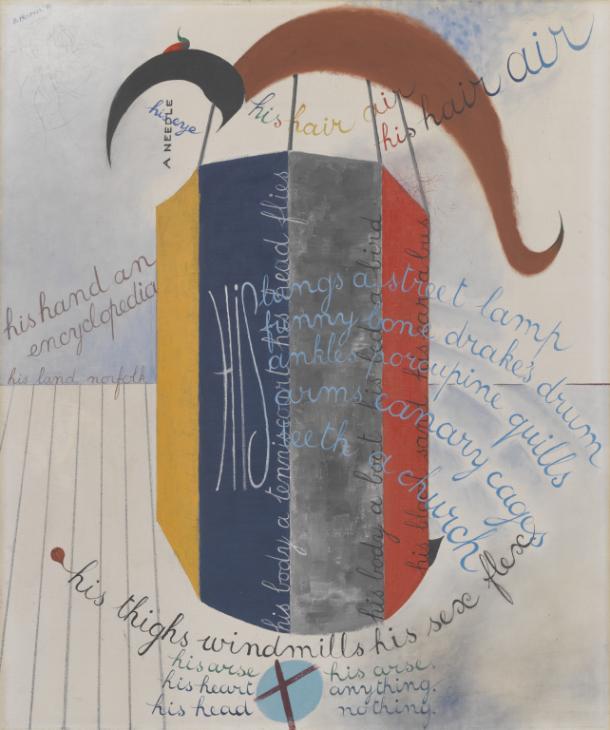
Sir Roland Penrose
Portrait
1939
Sorry, no image available
Louise Bourgeois
KNIFE COUPLE
1949

Pierre Roy
Boris Anrep in his Studio, 65 Boulevard Arago
1949
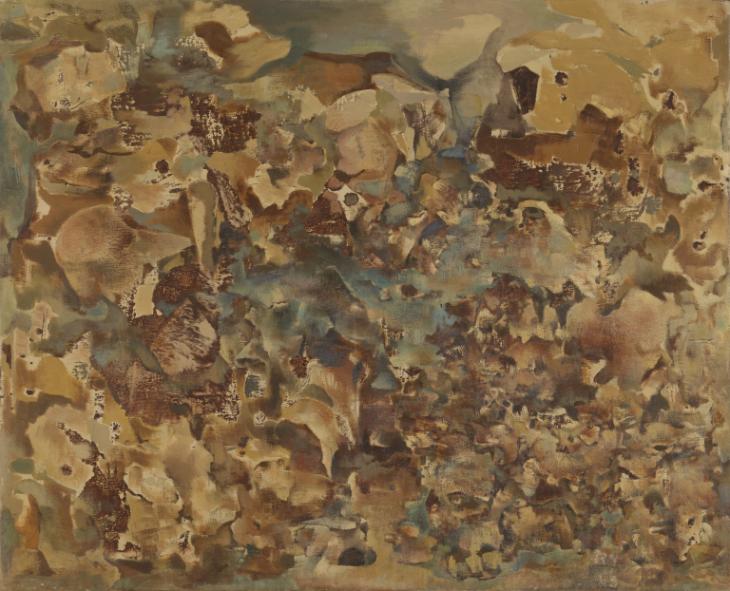
Ramses Younan
Inspiration from the sea
1963
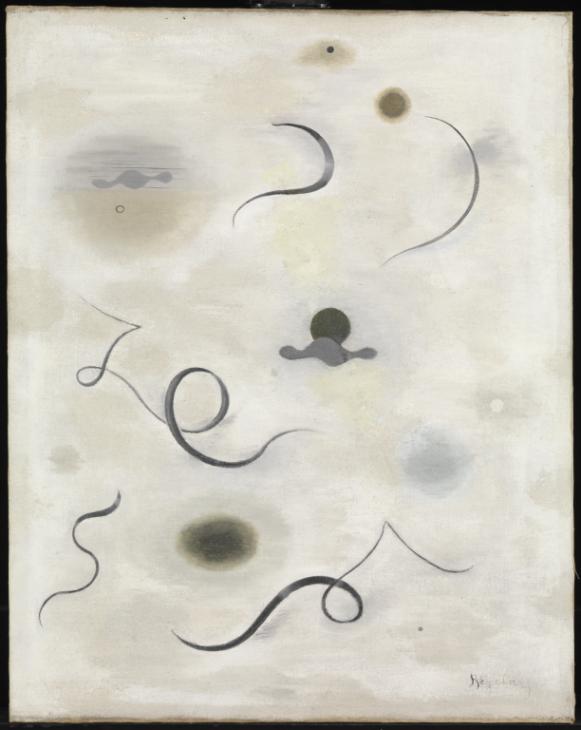
Paule Vézelay
Curves and Circles
1930
Sorry, copyright restrictions prevent us from showing this object here
Arshile Gorky
Garden in Sochi Motif
1942
13 rooms in Materials and Objects
Marisa Merz and Nairy Baghramian
Marisa Merz and Nairy Baghramian
See the diverse and inventive approaches to materials explored by artists in this display
Go to room
Nairy Baghramian Scruff of the Neck (LL 23/24b & LR 26/27/28) 2016 Copyright Nairy Baghramian. Courtesy the artist and Marian Goodman Gallery, New York, Paris & London
Collage
Collage
Find out how combining everyday objects and materials became a new technique for twentieth-century artists
Go to room
John StezakerMask XIV 2006
John Stezaker
Doris Salcedo
Doris Salcedo
Art that reflects on the violence and displacement caused by colonialism, discrimination, poverty and war
Go to room
Doris Salcedo Untitled 1987. Doris Salcedo
Explore Materials and Objects
Explore Materials and Objects
See one of the most influential artworks of the twentieth century and investigate materials and objects
Go to room
Photograph Tate 2016 (Lucy Dawkins)
A View From Tokyo: Between Man and Matter
A View From Tokyo: Between Man and Matter
Discover how sculptors working in Japan, Europe, and the United States in the 1970s inspired and influenced each other
Go to room
Jiro TakamatsuOneness of Cedar 1970
Estate of Jiro Takamatsu, courtesy Yumiko Chiba Associates, Tokyo
Irving Penn
Irving Penn
Transform your view of overlooked objects with Irving Penn’s photographs of rubbish on the streets of New York City
Go to room
Irving Penn Underfoot I New York, October 27, 1999
Courtesy of The Irving Penn Foundation
Mrinalini Mukherjee
Mrinalini Mukherjee
Discover the extraordinary sculptural forms of Mrinalini Mukherjee, who transformed an everyday materials into artworks
Go to room
Mrinalini MukherjeeJauba 2000
Mrinalini Mukherjee
Tacita Dean
Tacita Dean
Kodak 2006 documents the making of 16mm film stock inside a factory about to go out of business
Go to room
Tacita DeanKodak 2006
Tacita Dean, courtesy Frith Street Gallery, London and Marian Goodman Gallery, New York/Paris
Haegue Yang
Haegue Yang
Discover the work of Haegue Yang, who explores the history of conceptual art as shaped by a set of rules
Go to room
Haegue Yang Sol LeWitt Upside Down – Structure with Three Towers, Expanded 23 Times, Split in Three 2015
Sol LeWitt
Sol LeWitt
Discover Sol Lewitt, a leading figure in conceptual art who believe materials should be secondary to ideas
Go to room
Sol LeWittA Square Divided Horizontally and Vertically into Four Equal Parts, Each with a Different Direction of Alternating Parallel Bands of Lines 1982
The estate of Sol LeWitt
Mark Dion
Mark Dion
Question how museums shape our ideas of value through Dion’s display of objects found on the bank of the Thames
Go to room
Mark DionTate Thames Dig 1999
Mark Dion
Sarah Sze combines familiar objects to create a fantastical sculpture
Go to room
Sarah Sze Seamless 1999 Sarah Sze
ROOM 3: POP

Andy WarholElvis I and II 1964Art Gallery of Ontario, Toronto. Gift from the Women’s Committee Fund, 1966 2020 The Andy Warhol Foundation for the Visual Arts, Inc. / Licensed by DACS, London.
Although he was a successful illustrator, Warhol still wanted to be taken seriously as an artist. Inspired by the new wave of art he saw in New York galleries, in 1960 he started making hand-painted pictures combining advertising imagery with expressive painting. This soon gave way to a clean graphic style now known as Pop Art. Warhol grew up eating watered-down ketchup with salt for soup. His images of consumer items such as Campbell’s soup cans are rooted in his experience of an emerging aspirational culture, selling a dream of economic and social progress.
Warhol was eager to speed up the process of replicating his images, so in 1962 he adopted the commercial production technique of screenprinting. He began to use photographs from newspapers and magazines, often depicting traumatic scenes. Screenprinting meant he could reproduce photographs onto canvas multiple times. While the printing process removed the artist’s hand, Warhol often allowed his screen to be over or under-inked. This created effects that disrupted the images. The face of film star Marilyn Monroe became almost mask-like, while the emotional impact of the news images in his Death and Disaster series was both emphasised and undermined. Some images, such as Pink Race Riot (Red Race Riot), which depicts peaceful civil rights campaigners being attacked by police, connected his work to broader social struggles and forced viewers to look at the world around them.
Warhol said creating pop art was ‘being like a machine’, as the process was often machine-like or mechanised. He then said, ‘everybody should be a machine’, as machines don’t discriminate. If we were all machines then ‘everybody should like everybody’, whatever their gender. Warhol’s open and fluid approach to his subject matter, to people, and the relationships between them, spoke to a decade of social change.
Ana Lupas, The Solemn Process 1964–2008 (1964–74/76; 1980–5; 1985–2008)
The Solemn Process 1964–2008 is a large-scale installation comprising twenty-one unique metal sculptures of varying dimensions and forms, as well as two large wall vinyls, each displaying a grid of forty sepia-toned images. It was created over a period of five decades by Romanian artist Ana Lupas. The photographs feature a series of straw objects in rural, agricultural settlements. Some of the images are also populated by people who interact or pose with them. The objects in the photographs are the same shape as the metal sculptures, suggesting that there is a direct relationship between them despite the different materials and their presence in the gallery. Indeed, the two vinyl panels and the sculptural objects can be seen as discrete elements that directly relate to the three phases in which the work was made: the first between 1964 and 1974 and into 1976, the second between 1980 and 1985 and the third between 1985 and 2008. These three phases relate to the changing social and political situation in Romania.
Edward Ruscha, 7101 Sepulveda Blvd., Van Nuys 1967, printed 1999
This aerial shot turns an urban landscape into an abstract geometric design. Ruscha captured empty Los Angeles car parks from a helicopter early one Sunday morning in 1967, before any cars had arrived. From above the city appears silent and lifeless. Ruscha brought the images together into an artist’s book, Thirtyfour Parking Lots 1967. In 1999 he returned to the series, presenting the images as a photographic portfolio. He said, ‘over the years I began to appreciate print quality and see my photographs as not necessarily reproductions for a book, but as having their own life as silver gelatin prints.’
Gallery label, July 2019
ROOM 4: The Factory

Andy WarholScreen Tests 1964-1966Andy Warhol Museum (Pittsburgh, USA) 2020 The Andy Warhol Foundation for the Visual Arts, Inc. / Licensed by DACS, London.
An important part of Warhol’s fame was built through ‘the Factory’, which was an experimental art studio and a social space. Warhol set up the first Factory in 1963. After seeing his collaborator and former lover Billy Name’s silver apartment, he asked him to cover the Factory with silver paint and foil. It was the setting for the mass production of his paintings and sculptures, and the site of Warhol’s new interest in underground film making.
Warhol documented the people who passed through the Factory in his Screen Tests from 1964–6. Intended as film portraits, they emerged out of Warhol’s Most Wanted Men series of paintings (on display in room 3). The title refers to the Hollywood convention of filming new faces to test their ‘screen presence’. Warhol’s subjects were simply left to be themselves. They sat in front of the camera with nothing to do but endure its gaze for the duration of the film reel.
Warhol and his collaborators made more than 500 films between 1963 and 1972. They ignored traditional methods of film making and were often unscripted. The films usually featured his ‘superstars’, a group of personalities who spent their time at the Factory. By the mid-1960s, the Factory scene had become a form of living artwork, as famous and as controversial as Warhol’s paintings. Reflecting on this period, Warhol recalled how his 1965 exhibition in Philadelphia was so crowded the art had to be removed from the walls. He said it had become ‘an art opening with no art! We weren’t just at the art exhibit. We were the art exhibit.’
Tips for Visiting
Leave large bags and luggage at home or in your the hotel when visiting the Tate Modern. The museum, which operates a search policy on all bags when entering the building, doesn’t allow large bags, wheeled suitcases or boxes inside the museum. If you don’t have a choice but to bring along your luggage, store big items at the left luggage facility in nearby Waterloo station.
The Tate Modern is accessible to visitors with disabilities and all entrances are accessible for those in a wheelchair or scooter (or with a stroller). The museum also has wheelchairs available to borrow for free. Visitors with a disability can also receive concessionary admission to special exhibitions.
Free activities are available for families every day and the museum regularly offers events for young visitors, which are often held on holidays. Check the Tate Modern website for upcoming kid-friendly events and workshops.
While it might not make sense for every visitor to purchase a Tate membership, finding a friend in London with a membership card can be a great way to experience the museum. Not only are exhibits free to members, but there are two members-only rooms in the museum, one in each building. The members room in the original side of the museum has an outdoor patio overlooking the Thames that is the perfect place for a cup of tea during a visit to the Tate Modern.
When you are finished exploring the Tate Modern, head a few blocks east to Borough Market for lunch or a snack. The outdoor market is a good pick over one of the tourist-filled chain restaurants along Southbank.
Edward Ruscha, DIRTY BABY 1977
In this drawing, the words ‘DIRTY BABY’ stand out in large grey capital letters against a black ground. Ruscha created the words by carefully drawing and contouring individual letters rather than by using stencils, making this work unique within his group of ‘catch-phrase’ drawings dating from the late 1970s in ARTIST ROOMS (Tate AR00053–AR00059). Centrally aligned on the page, the outlines of the letters are slightly irregular, as if each one had been cut by hand from an undulating piece of paper and placed against a matte background (Marshall 2003, p.162). Each letter was drawn on the page in graphite, before black acrylic emulsion was painted around them, covering the entire background. This layer of emulsion is thick and impenetrable, with no visible brushstrokes. The drawing’s dense background is balanced by the lightness of Ruscha’s touch within the lettering. Black pastel is applied in smudges to create rippling shadows inside the letters, making them a patchy, smoky grey. The letters therefore appear to be ‘dirty’ like the ‘baby’ of the title. The slight illusion of three-dimensionality is the result of the artist’s precise draughtsmanship which paradoxically leaves almost no trace of his hand. This work is reminiscent of Ruscha’s ‘cut paper’ single word drawings in gunpowder produced in the 1960s (Richards 2008, pp.44–5), which similarly evoke the historical technique of trompe l’oeil, literally ‘to trick the eye’, with skilled shading, light effects and the conjuring of three-dimensions from a flat paper surface.
Из истории
Основателем галереи Тейт в Лондоне был Генри Тейт, владелец компании «Tate & Lyle», разбогатевший за счет изобретения и продажи сахарной ваты. Генри Тейт был ценителем викторианской живописи и решил вложить свои деньги в искусство, организовав в 1897 году экспозицию работ британских мастеров живописи XIX века.
В дальнейшем эта коллекция постоянно пополнялась и за сто лет было собрано такое количество предметов искусства, что в 2000 году для экспозиции современного искусства решили отвести отдельную галерею.
Здание электростанции Bankside, закрывшейся в 1981 году, удачно подошло для этой цели. Так, группа галерей Тейт пополнилась выставочным залом современного искусства.
- Новое здание получило название «Tate Modern», в нем разместились коллекции современного искусства
- Старая галерея, представляющая только классическое английское искусство, стала называться «Tate Britan».
За прошедшие годы Tate Modern приобрела большую популярность — она стала самой посещаемой галереей в мире, в год число ее посетителей составляет более 5 миллионов человек.
ROOM 11: MORTAL COIL

Andy WarholStatue of Liberty (Fabis) 1986The Broad Museum (Los Angeles, USA) 2020 The Andy Warhol Foundation for the Visual Arts, Inc. / Licensed by DACS, London.
As the 1980s progressed, Warhol’s work featured more political and religious imagery. Although it wasn’t deliberate, it reflected some of the major concerns of the time, including the Cold War between the US and the USSR and the escalating AIDS epidemic.
Warhol created images of the Statue of Liberty many times. It could be seen as the ultimate celebrity portrait. In Statue of Liberty (Fabis), Warhol laid military camouflage over this well-known symbol of freedom. The statue had personal meaning for Warhol. His family landed at Ellis Island, near to where Liberty stands, when they immigrated to the US. In this version, Warhol used a French biscuit tin lid, designed to commemorate the 100th anniversary of the statue arriving in New York as a gift from France. The Lenin series, created for a German gallery, saw Warhol return to the subject of communism and its most recognisable symbols.
Warhol had always used his own image in his art. In the 1980s, he created what came to be known as his ‘fright wig’ self-portraits for an exhibition in London. In earlier works, his wig was an integrated part of his appearance. In these pictures, his wig takes on the status of art. In contrast to his early self-portraits where he appeared aloof, in these works his gaunt face and intense expression convey the pain that he routinely suffered from since the shooting.
Знаменитые музеи Лондона
Музей «Тейт Модерн» входит в плеяду самых известных музеев не только Лондона, но и Европы.

Среди популярных галерей Англии можно выделить:
- Британский музей, содержащий множество исторических инсталляций, свидетельствующих о развитии Англии от эпохи Древнего Египта до современности.
- Дом 221 на Бейкер-Стрит может похвастаться жилищем-музеем Шерлока Холмса. Интерьер галереи во многом повторяет описание квартиры известного сыщика и его верного помощника доктора Ватсона. Со дня открытия в 1900 году и по сей день музей привлекает многочисленных туристов и самих жителей английской столицы.
- Галерея Саатчи – своего рода английская кунсткамера. Необычные эпатажные экспонаты вызывают у зрителя шок, отвращение и интерес. Галерея призвана побуждать сильные неоднозначные эмоции. Созерцание временных экспозиций вынуждает задуматься о зыбкости земного бытия.
- Еще один музей английской известности – дом-музей Чарльза Диккенса. Жилище автора «Оливера Твиста» обставлено с учетом традиций викторианской эпохи. Почти каждая вещь обстановки была свидетелем творчества романиста. Бродя по комнатам дома, посетитель будто погружается в то время, становясь современником гения.
- Музей «Амуры Лондона» – вызов ханжескому обществу. Экспозиции музея состоят из экспонатов, символизирующих любовь, желание и страсть. Усилить впечатление помогут превосходные коктейли с примесью афродизиаков. Уникальная галерея порождает неоднозначные чувства и эмоции.
Среди знаменитых музеев Лондона можно назвать и музей Виктории и Альберта, галерею дизайна, музей естественной истории и другие. Столица Великобритании по праву считается кладезем истории человечества.
Art in this room

Umberto Boccioni
Unique Forms of Continuity in Space
1913, cast 1972
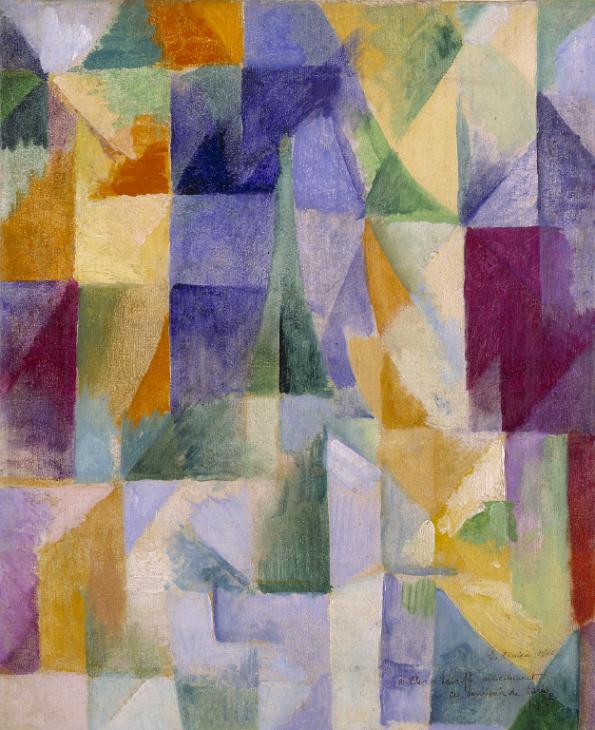
Robert Delaunay
Windows Open Simultaneously (First Part, Third Motif)
1912
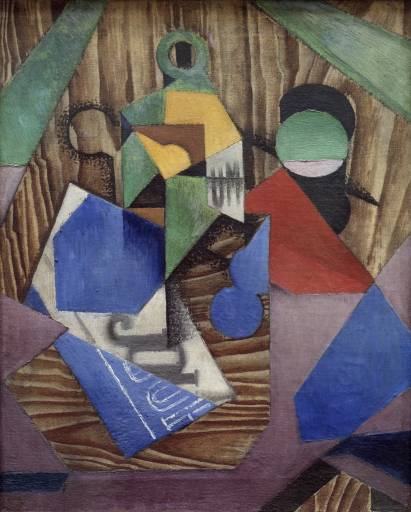
Juan Gris
Bottle of Rum and Newspaper
1913–14
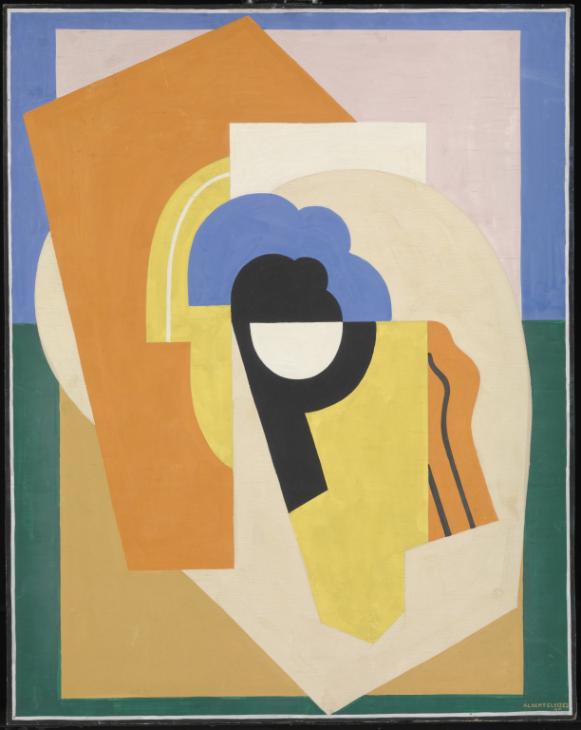
Albert Gleizes
Painting
1921
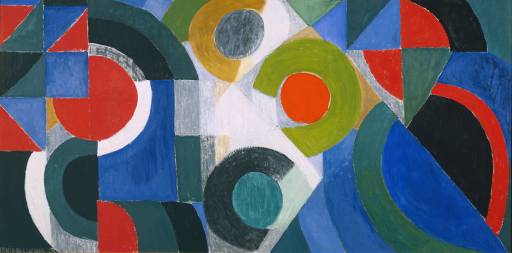
Sonia Delaunay
Triptych
1963

Max Beckmann
Carnival
1920
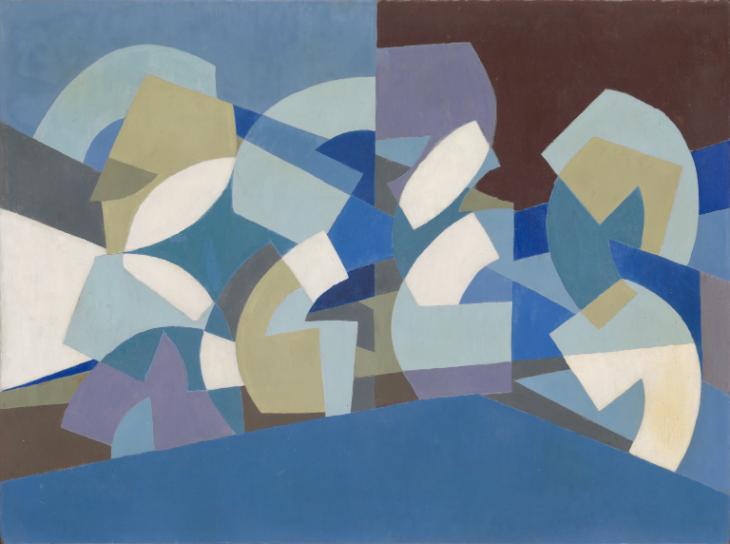
Saloua Raouda Choucair
Composition in Blue Module
1947–51

Gino Severini
Suburban Train Arriving in Paris
1915
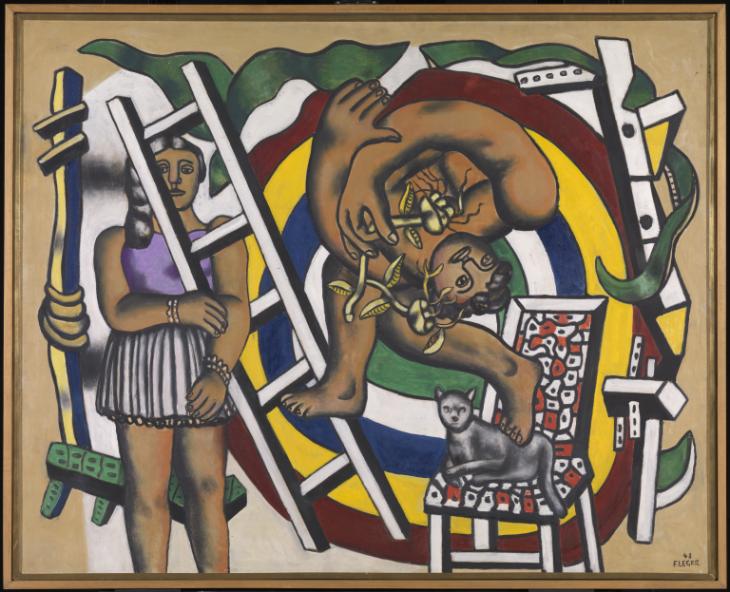
Fernand Léger
The Acrobat and his Partner
1948
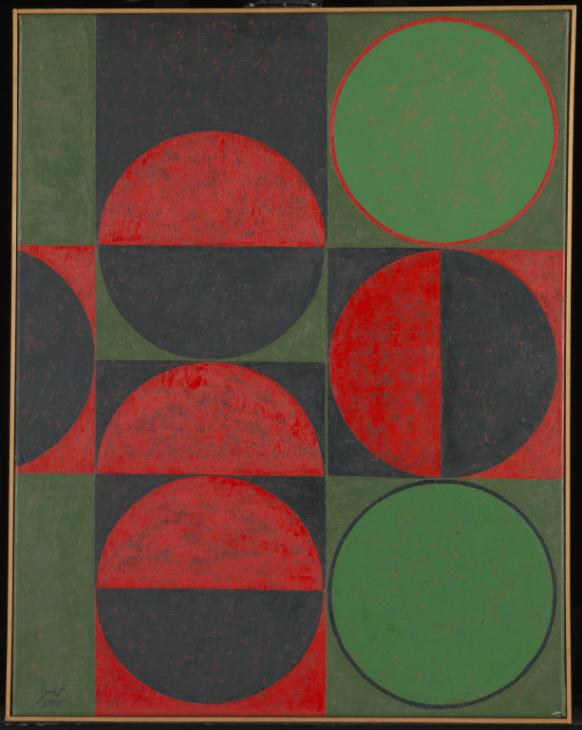
Anwar Jalal Shemza
Composition in Red and Green, Squares and Circles
1963

William Roberts
The Diners
1919

Amédée Ozenfant
Glasses and Bottles
c.1922–6
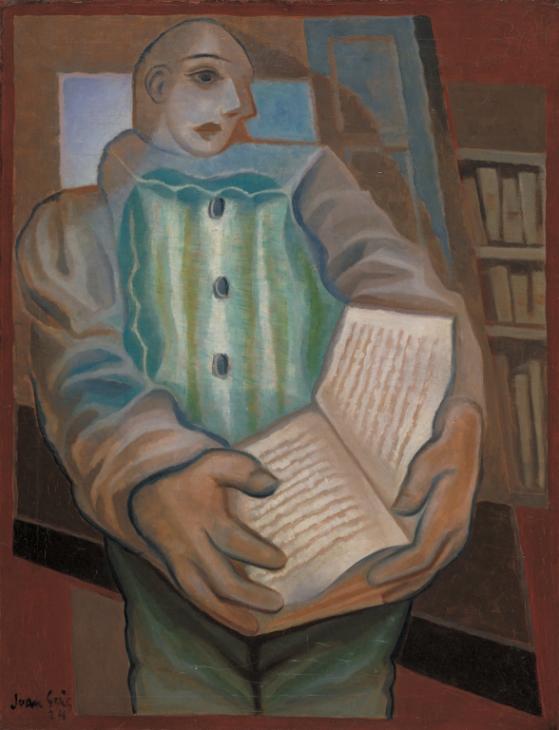
Juan Gris
Pierrot with Book
1924
Sorry, copyright restrictions prevent us from showing this object here
Diego Rivera
Still Life
1916
Sorry, no image available
Jean Hélion
Ile de France
1935
Архитектура
Главное здание галереи не зря было сохранено при проектировании Тейт Модерн, ведь бывшая электростанция – это не только индустриальное, но и историческое строение. К созданию урбанистического здания электростанции Бэнксайда причастен выдающийся архитектор Джилс Гилберт Скотт, который известен как автор здания Библиотеки Кембриджа и Ливерпульского собора. В 1947 году во время реконструкции и расширения прежней электростанции, которая работала здесь с 1891 года, Скотт создал огромное (155 метров в длину и 73 метра в ширину) здание из стальных каркасов, заполненных кирпичной кладкой. Внутри здания был просторный и высокий турбинный зал, в северной части находилась котельная, в южной – коммутаторная станция. Именно просторные помещения натолкнули архитекторов Жака Херцога и Пьера де Мёрона на мысль, что здесь можно создать галерею и выставочные площади, когда встал вопрос о сносе бывшей электростанции.
Преображение здания началось в 1995 году с освобождения от ненужного оборудования, в результате чего Турбинный зал вскоре превратился в эффектный вестибюль с выставочными зонами, а Котельная стала местом размещения галерей. Конечно, при реконструкции не обошлось и без архитектурных изменений, которых требовало новое предназначение здания. Так, например, одну часть крыши пришлось сделать из стеклянных конструкций, чтобы обеспечить галерею естественным освещением. В восточной части Турбинного зала, который в свою полную высоту может сравниться с 6-этажным домом, было оставлено незаполненное галереями пространство. Его теперь используют при организации выставок каких-нибудь огромных арт-объектов.
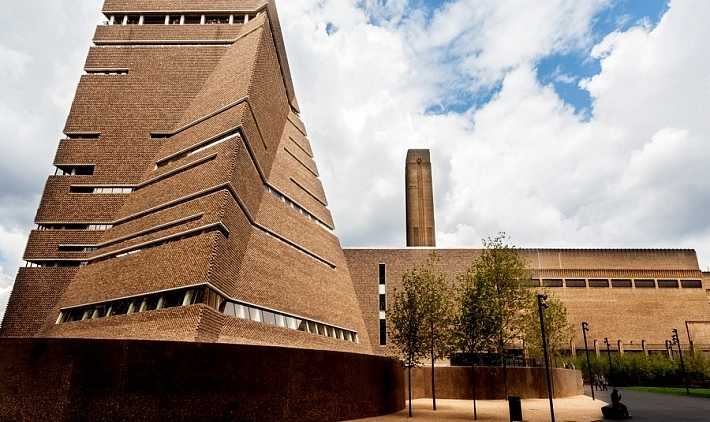
В 2009 году Тейт Модерн приступила к очередной трансформации бывшей электростанции, поскольку требовалось создание новых галерей и выставок. Для этого «Херцог и де Мёрон» предложили использовать подземные нефтяные резервуары, вмонтированные к югу от главного здания еще со времен работы электростанции. Гигантские цистерны, имеющие 28 метров в диаметре и 7 метров в высоту, в 2012 году были впервые открыты для посетителей. В июне 2016 года началась выставочная деятельность нового крыла галереи, которое было воздвигнуто прямо над бывшими нефтяными резервуарами. Необычное здание, напоминающее с определенного угла обзора пирамиду, отлично вписалось в дизайн всей галереи, а также позволило увеличить выставочные пространства Тейт Модерн более чем в 2 раза.
О месте Галерея Тейт Модерн
Талантливый архитектор Несмотря на то, что южная сторона набережной Темзы обладает весьма разнообразным архитектурным оформлением, галерея Тейт Модерн привлекает посетителей своим красивым внешним видом. Рядом с этой достопримечательностью расположены такие сооружения как аттракцион «Лондонский глаз», здание городской мэрии и огромный небоскреб Oxo. Массивный кирпичный блок, которым является галерея, подпирает небо своей 100 метровой трубой. Еще одной особенностью знаменитой галереи считается совокупность ее экспонатов, которые своим числом и разнообразием входят в число крупнейших в мире музеев современного искусства. Музей на сегодняшний день занимает здание бывшей электростанции, закрытой еще в 1981 году. Строение, считающееся ярчайшим произведением искусства архитектуры, начало свое возведение в 1947 году и продлилось 16 лет. Автор и архитектор сэр Джайлс Гилберт Скотт был ответственным за создание символической коллекции Великобритании, он руководил строительством моста Ватерлоо, нового здания палаты общин, театра «Феникс», множества церквей, лондонских школ, различных колледжей и библиотек, знаменитой электростанции Баттерси. За множество возведенных исторических сооружений в 1924 году Скотт был удостоен рыцарским титулом, а в 1933 году его избрали президентом Королевского института архитекторов. Стоит отметить, что все награды и титулы талантливый дизайнер получил благодаря своей идее о создании красных телефонных будок, оснащенных решетчатыми окнами. Первые такие будки появились в городе в 1935 году, навсегда занеся его имя в историю города.Второе дыхание Новый этап в жизни электростанция начался в начале 90-х годов XX века. Главой правления галереи было объявлено о старте конкурса, на основе которого участники должны были преобразовать бывшее здание электростанции под музейные нужды современной галереи. Стоит отметить, что в конкурсе имели право участвовать все желающие, независимо от их места жительства. Кстати, конкурс не был простой необходимостью дать галерее возможность осуществить переезд на новое место, старая галерея, накопившая огромную коллекцию английского и другого зарубежного искусства, нуждалась в просторных помещениях. Но галерея, основанная в 1897 году Генри Тейтом, не могла уместить в здании на Милбанк все экспонаты. Поэтому было принято решение выделить из всех произведений искусства только работы ХХ столетия, которые в дальнейшем стали основой первого в Англии музея современного искусства. Кстати, выбранное здание давало галерее определенный потенциал, необходимо было только выбрать более подходящий проект. Которым в дальнейшем стал проект одной архитектурной компании из Швеции «Жан Херцог и Пьер де Мьюрон». Их предложение позволяло сохранить уникальную архитектуру старого сооружения и одновременно освободить достаточное выставочное пространство. Сохраненным в здании электростанции стал большой зал с трансформаторами, с высотой помещения около 35 метров и длиной в 152 метра. Открытый плацдарм сейчас используется для различных многометровых инсталляций, а просторный турбинный холл – как огромный выставочный зал, равного которому нет в мире. Стоит отметить, что галерея ежегодно устраивает такое количество выставок, которое посещает около 5 миллионов посетителей, кстати, так как коллекция неуклонно растет, в Лондоне планируют открыть новые филиалы музея.
12 rooms in Artist and Society
Mitch Epstein and Marwan Rechmaoui
Mitch Epstein and Marwan Rechmaoui
The rooms in this display focus on the relationship between artists and society
Go to room
Mitch EpsteinGavin Coal Power Plant, Cheshire, Ohio 2003
Mitch Epstein/Black River Productions, Ltd.
A view from São Paulo: Abstraction and Society
A view from São Paulo: Abstraction and Society
Explore how geometric abstraction fabricated dreams of a new society in the twentieth century
Go to room
Carmelo Arden QuinCarres 1951
estate of Carmelo Arden Quin; courtesy Ignacio Pedronzo, Sammer Gallery Miami
Civil War
Civil War
The works in this room find visual expression for the complex horrors of civil war
Go to room
André FougeronMartyred Spain 1937
The estate of the André Fougeron
David Goldblatt
David Goldblatt
Discover the South African photographer who captured and critiqued the racially segregated society from 1948
Go to room
David GoldblattChild Minder. Joubert Park, Johannesburg 1975, printed 2013
David Goldblatt
Soviet Photobooks
Soviet Photobooks
Exlpore the experimental ways the Soviet Union used photography, publications and posters to promote the socialist state
Go to room
Gustav Klutsis Raise Higher the Banner of Marx, Engels, Lenin, and Stalin! 1933 Tate Photography
Graciela Iturbide
Graciela Iturbide
Uncover Graciela Iturbide’s deep connection with the communities she photographs
Go to room
Graciela Iturbide Self-portrait in Trotsky’s house 2006
Joseph Beuys
Joseph Beuys
Discover the work and outlook of Joseph Beuys, who saw art as central to all aspects of human existence
Go to room
Joseph BeuysThe End of the Twentieth Century 1983–5
DACS, 2020
Bani Abidi
Bani Abidi
Bani Abidi’s Reserved 2006 is a two-screen video installation that shows an unnamed city preparing for the arrival of a VIP
Go to room
Bani Abidi Reserved 2006. Courtesy The Artist & Experimenter, Kolkata
Citizens
Citizens
View artworks that pay impressive tributes to campaigners for citizenship and civil rights
Go to room
Lorna SimpsonThen & Now 2016
Lorna Simpson, courtesy Salon 94, New York
Portraits and Community
Portraits and Community
Reflect on the relationship between artists and subjects and the responsibilities involved in representing communities
Go to room
Claudia Andujar Horizontal 2 from Marcados series (1981-1983) Courtesy Galeria Vermelho
Yinka Shonibare CBE
Yinka Shonibare CBE
Learn about the impact of immigration on British culture in The British Library
Go to room
Yinka Shonibare, The British Library, 2014 Yinka Shonibare CBE
Igor Grubic
Igor Grubic
Igor Grubić’s work often explores themes of intolerance in society
Go to room
Igor Grubić East Side Story 2006–8 (detail) Igor Grubić
Dawn Mellor, Sergeant June Ackland (Trudie Goodwin) 2016
This is one of a series of works depicting female police officers from British television dramas. Mellor has painted the women in their police uniform costumes and has added ‘visual commentary’. These elements complicate how we look at the characters and relate to society’s expectations for female protagonists. The paintings belong to a series called Sirens. This title evokes the sound of police cars, as well as the ‘screen siren’, an actress famed for her seductive appearance. The term originally refers to the enchanting yet dangerous female creatures in Greek mythology.
Gallery label, May 2019
